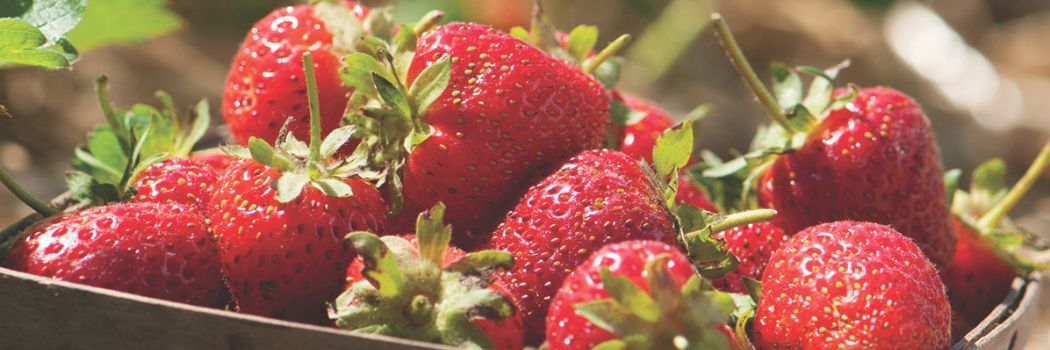- Strawberries | Instructions for Growing from Seed, including Traditional & Alpine Strawberries | Tech Sheet (PDF)
- Basics of Growing Hoophouse Strawberries, by Lynn Byczinski
- Summer-Bearing / June-Bearing Strawberries | Key Growing Information
- Day-Neutral / Everbearing Strawberries | Key Growing Information
- Strawberries | Instructions for Growing from Bare-root Plants | Tech Sheet (PDF)
- Strawberry Planting/Harvesting Program Comparison Chart
- Strawberries | Instructions for Growing in Hanging Containers from Bare-root Plants | Tech Sheet (PDF)
- 3 Main Types of Strawberries: Tips for Selecting Which Types to Grow
Steps to Benefit Fruit Quality, Earliness & Yield
by Lynn Byczynski, Farmer, Author & Founder of Growing for Market
Strawberry quality, yield, and earliness are greatly improved with production in a hoophouse. Penn State researchers found that in their climate, hoophouse strawberries produced fruit 3 weeks earlier in spring than those grown outside, with about a 25% yield increase.
Most commercial hoophouse strawberries are grown using an annual plasticulture system that includes raised beds, drip irrigation, plastic mulch, and floating row cover:
- Plugs are planted in late summer on beds covered with plastic mulch, with drip tape beneath the mulch.
- As the weather gets cold, the young plants are covered with floating row cover to maintain the warmer soil temperatures needed for establishment.
- The plants grow slowly during winter in the protected environment of the hoophouse.
- As the weather warms, they flower and produce berries for several weeks.
- The crop is then finished for the year.
- Strawberry plants can either be removed to make way for other crops; or they can be left to produce a second year if berry prices or other factors justify tying up the space for a year.
Plugs are available from outside suppliers, or they can be produced on the farm in summer. To grow your own plugs:
- Detach unrooted daughter plants (runners) from the mother plant in July.
- Stick them in potting mix in 72-cell flats under intermittent mist until roots protrude from the bottom of the cell.
- Then place on a greenhouse bench and grow until September, when they can be planted into the hoophouse.
- Plants that are rooted in July are likely to flower and fruit in fall in warmer climates, but that won't affect their yield the following spring.
Learn More
Here is a short list of informational resources on hoophouse production of strawberries, including the application of horticultural plastics:
- Penn State researchers hope to extend berry growing season in Northeast: Research could increase growers' yields while also improving quality and shelf life for consumers Penn State (2017)
- High Tunnel Strawberries Center for Crop Diversification, University of Kentucky College of Agriculture, Food and Environment. (2019)
- Growing Strawberries in High Tunnels in Missouri Universitiy of Missouri (2006)
- Production of Vegetables, Strawberries & Cut Flowers Using Plasticulture Natural Resource, Agriculture & Engineering Service (NRAES) (2004–2012)
Byczynski and her family have been growing vegetables and cut flowers since 1988, selling through CSAs, at farmers' markets, to chefs, grocery stores, and florists. They currently grow cut flowers and hoophouse tomatoes on about 2 acres of their 20-acre farm near Lawrence, Kansas.
She is also the author/editor of two of our favorite books about market farming, The Flower Farmer and The Hoophouse Handbook.



